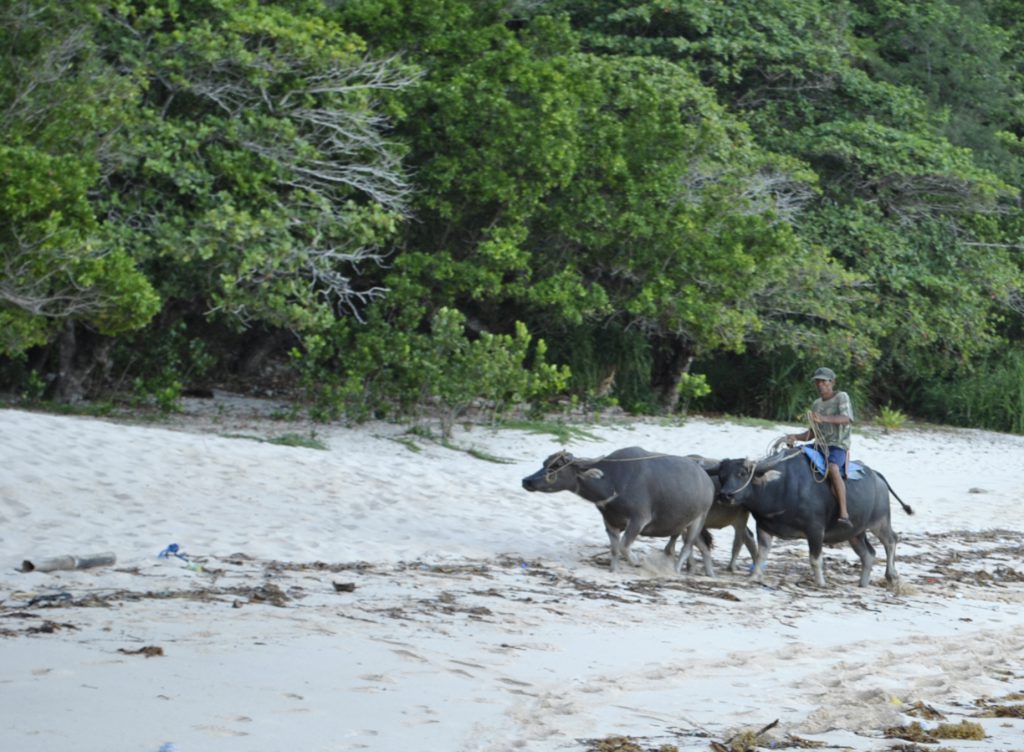True to its mandate of conserving, promoting, and propagating the carabao as a source of milk, meat, draft power and hide, the Philippine Carabao Center is continuously exploring possible conservation sites for the country’s native carabaos.
One of them which was recently identified is the Calayan Island in Cagayan.
Why Calayan?
Located about 39 km west-southwest of Babuyan Island off the north coast of the Philippines and belonging to the Babuyan Islands group in the China Sea, Calayan Island has been identified as a place in Northern Luzon with no other breeds of water buffaloes, except the native ones, introduced to the island.
The exploration of the conservation site was initiated by Dir. Franklin Rellin, center director of PCC at Cagayan State University (PCC@CSU). He discussed and presented the PCC’s programs and services to Calayan Mayor Alfonso Llopis and municipal agriculturist Lino Llopis. The local government unit (LGU) then committed to donate 50 hectares of land in support of the establishment of the conservation site.
In order to establish the species identification of the native carabaos found in the island, researchers from the PCC national headquarters have assisted the PCC@CSU by undertaking morphological characteristics and molecular identification of the animals.
They were composed of Dr. Ester Flores, Project Development Officer IV; Laila Labonite, Science Research Specialist I; and Sherwin Matias, Science Research Specialist I of the Genomics and Bioinformatics unit and Lilian Villamor, Senior Science Research Specialist; Alexander Paraguas, Science Research Specialist I; and David Antalan III, Science Research Assistant of the Cryobank unit.
The research team collected 79 whole blood samples and documented the morphological features and morphometrics of the species.
The biological samples were processed in the PCC national headquarters facilities. They encompassed the DNA isolation and the downstream molecular analysis for species identification.
Informative genetic markers were also used, such as the Cytochrome c oxidase subunit I (COI) from the mitochondrial DNA and the recommended Food Agriculture Organization short tandem repeats (FAO-STR) or “microsatellites” from the nuclear DNA, for the analysis.
Both genetic markers revealed that the representative samples collected from the island were native carabaos based on their relatedness to other native carabaos in other provinces in Luzon and in other countries.
Meanwhile, the data which entails the presence of subpopulation or other breeds of native carabaos in Calayan is still underway. A better understanding on the species identification of native buffaloes in Calayan based on their molecular and phenotypic characters will elucidate the evolutionary history and domestication of native buffaloes in the country.
Moreover, the data will be used for the strategic conservation management of the buffalo species in the island.
The undertaking of the activities conducted was made possible through the DA Livestock Program-funded project titled, “Genetic Diversity of the Philippine Carabao using mtDNA (COI) and microsatellite markers (FAO STRs)”.
Conservation management
PCC’s conservation efforts are done in two ways: conservation by improving its economic value and conservation by preserving, cryobanking, and maintaining the good genes of native carabaos.
“This is not just conservation. It is actually helping the carabao population in the island become more productive and become really better animals. When we say productive, we improve the herd by selecting good breeder bulls and we improve the population diversity by also managing the inbreeding for them,” Dr. Flores said.
The team has started acquiring the total herd inventory of the carabaos in the island and is applying ear tagging to identify and classify them according to age groups.
“The population of native carabaos in Calayan is unique and already homogenous so the more that we should be very careful in managing the inbreeding of the population and that is where we will help,” Dr. Flores said.
She added that it is very critical to identify the bulls which are suitable for breeding. Thus, she said, they will be needing the information about the established pedigree and the inventory of all the animals for the whole island to make it easier for the team to help manage the inbreeding concerns.
So far, the other conservation sites for native carabaos which were identified for exploration were Carlos P. Garcia Island in Bohol and Biri Island in Samar for the Visayas. The team is still assisting in identifying possible sanctuaries for native carabaos in Mindanao.

